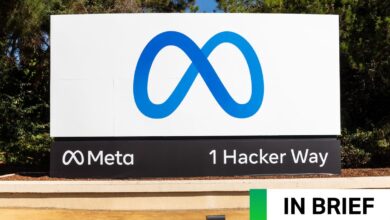How AI Helps Map the Universe

Artificial intelligence (AI) has become an essential tool for understanding the world. Now that interest in space exploration is picking up again, this could happen for other worlds as well.
Despite decades of research, scientists still don’t know much about the universe beyond Earth’s atmosphere. Mapping planets, stars, galaxies and their movements through space will help, but this has historically been a challenging task. AI makes it easier in several ways.
1. Identify celestial bodies
Because much of the universe is so far away, it’s often difficult to tell which is which. Machine vision systems can help by distinguishing between different celestial bodies, while this would be unreliable with the naked eye.
Researchers from the University of Hawaii developed a promising AI model for this in 2020. Their neural network could do that identify galaxies with 98.1% accuracy and achieved an accuracy of 97.8% and 96.6% for stars and quasars, respectively. As a result, they were able to compile a 300-gigabyte catalog of the celestial objects spanning three-quarters of the sky.
As telescopes and satellites provide more insights into the universe, such classification algorithms can make it easier to interpret the data. Once scientists know what they are looking at, they can conduct further research with precision.
2. Measure distance
Mapping the universe isn’t just a matter of knowing what’s out there. Researchers also need to measure distances between bodies to understand the scale and motion between galaxies or to plan future flights with satellites or spacecraft. AI also helps in this area.
Calculating distance by monitoring sky activity requires complex mathematical equations – the kind that AI is adept at. One solution achieved an accuracy of 76% in determining the size and spacing of molecular clouds by analyzing radio telescope data. Another measured how far away gamma-ray bursts are by monitoring the power supplies of ground-based telescopes.
Such tools provide more reliable estimates of the size and rate of activity in the broader universe. As models improve with additional data, they could lead to safer space travel or provide better insight into activities such as solar flares or supernovae.
3. Understanding heavens in the past
AI also helps map the universe by analyzing historical celestial movements. While detailed records of the sky may not exist throughout history, much of the visible sky is actually a representation of the past due to the time it takes for light to travel. Consequently, scientists can use AI to model and understand previous trends in space.
One study built an AI model to create a catalog of more than 17,000 galaxies near the Milky Way. Because it analyzed areas so far from Earth, the resulting simulations reflected the distant past, revealing new information about how celestial bodies have moved over the millennia. The resulting map contained dark matter structures that researchers had not previously known about.
Such insights show how galaxies have shifted and influenced each other throughout history. Understanding this is the key to a better understanding of how the universe works on a larger scale.
4. Predicting future shifts
AI can glimpse into the future while learning about the past. Predictive analytics models have already applied the concept to sales forecasting and tracking disease outbreaks, and they could do the same for major celestial events.
The AI solution that simulated historical movements of galaxies revealed that the Milky Way and Andromeda galaxies are moving towards each other. With additional data and a predictive model, scientists may be able to determine when a potential collision could occur in the distant future.
AI-driven predictions are especially useful on a smaller scale. Predictive analytics can help researchers predict solar storms or asteroid movements, so they know when action may be needed to prevent damage or disruption on Earth.
5. Create accurate planet maps
Some AI tools take a more limited approach to mapping the universe. While understanding the stars is important, creating maps of physical planet surfaces may be more useful in the short term, especially as space exploration increases. NASA’s Mars Exploration rovers already use AI to navigateand similar technologies could provide detailed studies of exoplanets.
Creating a geological map of a distant planet means combining a significant amount of data from different sources. This can be challenging, take a lot of time and leave significant room for error. AI can gather the information faster and with greater accuracy to form a reliable single source of truth.
Machine learning can spot trends and similarities in huge data sets that people might miss. Consequently, it can potentially identify geological structures that scientists would otherwise miss. These tools can also turn a collection of disparate data into a single, actionable map to facilitate further exploration.
6. Map timelines faster
Across all applications, AI mapping tools streamline the time it takes to analyze and understand the universe. That’s important because faster discovery leads to accelerated innovation and makes deeper research viable, even in time-consuming environments.
A study by researchers in Japan highlights this potential. The team developed an AI simulator to model galaxies and dark matter distribution. It took only one CPU second on a laptop to run the simulation when it would normally take dozens of hours for a supercomputer. Such speed was also not accompanied by a decrease in accuracy.
When mapping processes takes less time, scientists can carry out more of them. As a result, the astronomy community can gain additional insight without time-consuming, expensive projects that may be more difficult to obtain funding for.
7. Make research more accessible
Likewise, AI makes such research feasible for a larger group of people. As timelines shorten, so do associated costs. These optimizations ensure that smaller companies or less funded researchers can participate in the same type of research.
Conventional astronomical surveys can cost billions of dollars each – far more than many businesses or educational institutions can afford. AI reduces these costs in several ways. Most obviously, it reduces the time it takes to conduct such research, but its benefits go further.
Complex machine learning models can produce acceptable results with less data, reducing associated costs. Off-the-shelf algorithms are becoming more widely available as this technology grows, further reducing technology costs and model training time. Trends like these will democratize the mapping of space, leading to greater diversity of research, which drives innovation.
AI unlocks the secrets of the universe
Scientists need to map the universe in more detail before the next wave of space exploration can begin. AI could be the key to that endeavor.
AI has already brought impressive improvements to a vast amount of astronomical research. Things will only get better as more teams embrace the technology – ideal parameters will become clearer and the relevant data will increase. Machine learning could be the catalyst for the second space race in this trend.






